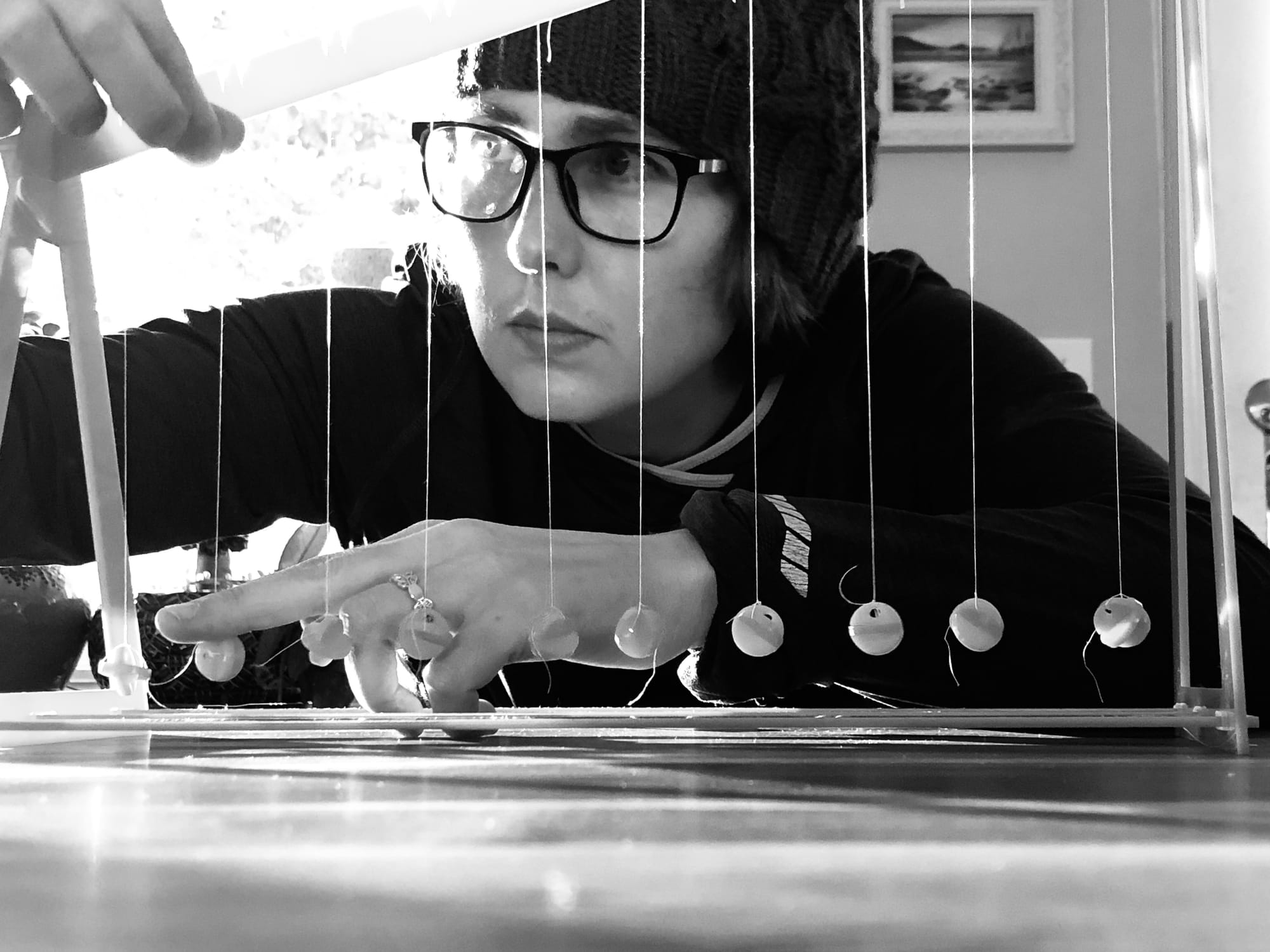Week 49: Pendulum Labs
Pendulums are wonderful physics toys that are great for exploring periodic functions. For week 49, I encourage learners to get out some string, weights, and stop watches. Here are some ideas for playing with math and pendulums: Start with a string and a weight to observe basic pendulum motion. Nuts,


Pendulums are wonderful physics toys that are great for exploring periodic functions. For week 49, I encourage learners to get out some string, weights, and stop watches.
Here are some ideas for playing with math and pendulums:

- Start with a string and a weight to observe basic pendulum motion. Nuts, bolts, tennis balls, and other objects can work as weights.
- Record how long it takes for the pendulum to return to its start (this is called the period).
- Change the length of the string to see if it changes the period.
- Change the mass of the weight to see if it changes the period.
- For older learners, you may want to try to find the relationship between time, period and length.
- With all ages, it can be fun to look at trigonometric functions with this activity.
- Another activity is to create a wave pendulum. This can be done with a broomstick and weights, or other construction toys. I like to bring in a maker box and materials and have learners devise a way to make a wave pendulum. Once you have one working, then see if learners can explain why it’s called a wave pendulum. For those that like to code, look at creating a wave pendulum . My code is here. I also made one in desmos (below). At the bottom of this post I have a portable laser cut pendulum I designed.
- Another activity is a painting pendulum. Hang a cup full of paint over a canvas and push it into a circular motion and watch the curves that are created as the pendulum is dampened. These can be a lot of fun with large tripods in bigger spaces.
- Finally, I love to create chaotic pendulums because they are such a contrast to the previous activities. To create a chaotic pendulum, you can use building toys to create a tripod with a pendulum and then put a magnet in the weight. Put other magnets just beyond the reach of the pendulum and kick it off. The motion observed will be nothing like the periodic and predictable motion of the previous exercises. This is a great opportunity to talk about dynamic systems, chaos, and unpredictable behaviors.
- Another topic that can be discussed is how pendulums dampen and why they do. What would happen in a vacuum?
